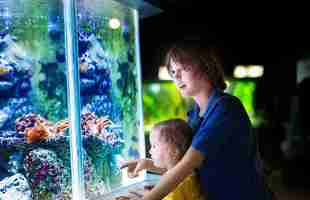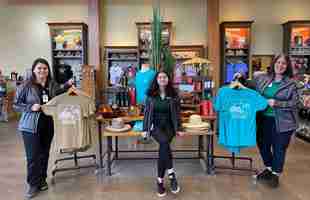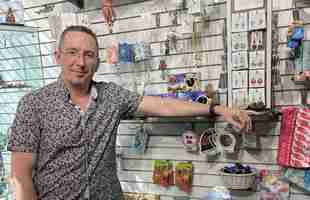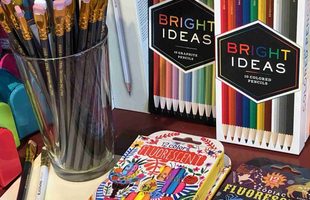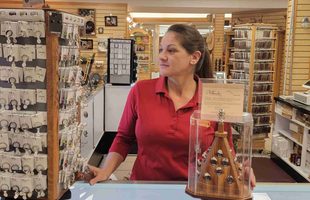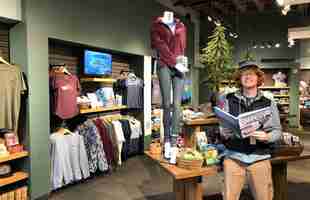Animal-themed, hand-crafted, and locally sourced jewelry are the themes at zoo and aquarium shops in variety of locations nationwide. For this article, zoo staff members described their top sellers in both high-end and more inexpensive categories, and the best ways to sell more jewelry items.
At Zoo Boise in Boise, Idaho, the Zootique Gift Shop stresses a wildlife-oriented and environmental theme. Warehouse Manager Delaney Vatcher said display is the most important way to sell more jewelry items.
“Generally, it is display that’s most important for jewelry sales. Some of our jewelry suppliers give us displays that do a great job pushing the product. But it is all about having jewelry in a convenient location that’s easy to see and displayed in a way to draw the eye.” She said that is accomplished with cross-merchandising and special displays occasionally, but that inexpensive items move so quickly the store cannot keep up with creating that type of presentation. “With our more expensive items in cases, we can create more elaborate displays,” she noted. “In the past, we’ve featured items from a region in Mozambique, Africa, in a display that included hand-carved earrings and a variety of products from the region. The zoo has donated a lot of resources and time to the area, and we have a relationship with Gorongosa National Park.” That link makes for an attractive and involving display.
Overall, inexpensive jewelry typically does better for the shop than more expensive items, Vatcher related. “We have the collections of hand-carved wood jewelry from Africa that does well on the higher-end side, but mostly items around the $10 mark, necklaces and bracelets, do the best.” She described these items as “pretty much all animal themed, including turtles, giraffes, wolves, red pandas, lions and tigers, especially pieces that show the animals that are at the zoo themselves.”
The Santa Barbara Zoo in Santa Barbara, Calif., holds mammals, amphibians, reptiles, insects, and a small aquarium. The facility’s retail director, Ross Beardsley, explained that at present, the 1,200-square-foot gift shop remains closed, while outdoor, tented space – which the zoo plans to keep long-term in addition to the indoor shop – has created a pandemic-safe environment. When the shop is open, as it soon will be, he described the primary focus on jewelry as oriented more toward kids than adults, with offerings that are more inexpensive than high end. “We don’t sell fine jewelry like art museums do, with collections in cases by the cash wrap. We have a limited amount of jewelry in cases by the cash wrap, but it doesn’t really sell for us.” There is an exception to that, however. “High-end rings from R. S. Covenant do very well. They have an amazing display shaped like a pyramid on little steps. The displays really sell it,” he asserted. “The display sits on top of little drawers that the cashier can access. We carry one piece of each style, and each can be changed out if it doesn’t sell. They’re beautifully made pieces.” The brand was added because the zoo does a lot of weddings on the property, and nicer zoo-themed gifts were requested often for bridesmaid gifts. “The line has zoo, aquarium, and other themed rings.”
Overall, he said, the zoo store does well with more inexpensive items, such as those from World End Imports, which he described as the store’s favorite line. “They have a rep who comes and does our wall displays and takes an inventory count, so it is basically a turn-key operation for me.” When the store is open, Beardsley said keeping the large eight-by-four-foot wall space used for this jewelry full and replenished leads to strong sales. “Our rep usually comes up from Los Angeles every three weeks. We moved from a four-way rack to the wall display because you can see the whole display of jewelry at once, from the more expensive items for older kids and adults at the top to lower space for less expensive items aimed at younger kids on the bottom. This has done really well,” he noted. That said, the always-busy zoo store did better with jewelry five years ago than more recently, he explained, so he will be keeping an eye on that category.
Where sales continue to thrive are in mood rings, which Beardsley described as “selling all day long, placed next to the register.” For World End Imports “The price point is generally $6.95 to $19.95, with a medium price of around $9.95 selling very well. All the pieces are zoo animal-related.” The wall display is located near the register both to draw customer attention and, as he explained “not so we can watch it, but so the customer thinks we are watching it.”
In Salisbury, Md., at the Salisbury Zoo, located on the beach-close Delmarva Peninsula, Gift Shop Buyer and Development and Marketing Associate Mary Seeman sometimes uses social media to display jewelry items, but primarily relies on display near the counter and on individual racks. “We display our Sienna Sky brand on its own rack, while World End Imports and other items are close to the counter. My Fair Trade items are grouped in displays by the counter on turn-around-style displays. And, I have a flat wall right by the cash wrap that I use to hang items on as well. This kind of placement is what works best for us in terms of sales.” She added that the zoo itself is relatively small in size but receives a large attendance at the zoo itself and in the shop, which makes keeping the jewelry displays easy to spot essential. “I don’t have a lot of space in the shop itself,” she said of the approximately 300-square-foot space.
Despite the shop’s small size, jewelry is a strong seller for Seeman. “Our expensive pieces such as Fair Trade, things like alpaca silver jewelry and copper cuffs and necklaces all do well and are somewhat zoo-themed. We try to keep things affordable; with more inexpensive items, we do well with necklaces and earrings from both Sienna Sky and World End, as well as with the Jajebo line,” she said. “The Jajebo line features drawn images of animals that are reproduced on recycled, laminated cereal boxes. They are just beautiful, and true to what the animal looks like, whether its bees, bugs, or zoo animals.”
For Retail Manager Bre Wong at the Alaska Wildlife Conservation Center in Anchorage, Alaska, keeping displays fresh, cross-merchandising, and separate jewelry display areas all work to enhance sales. “For higher-end items, we keep those in a display case. Items that are more attainable for everyday wear are on jewelry racks that either the vendors themselves have created or on a table with nice holders that I have. We change our displays based on what items we have at the time.” The gift shop is just under 2,000-square-feet, Wong said.
High-end jewelry items include Alaska-made silver, sea glass jewelry, and hand-painted jewelry from Trickster Company, Wong said. “Locally made items are the focus of what we have. We are shifting everything in the store from mass-marketed or made-overseas items to those that are locally created.” This is true of more inexpensive jewelry items as well, Wong attested. “We have lovely laser-cut wooden jewelry priced at $12 for a set of earrings. In the more expensive category, we have $50-$100 silver and gold necklaces, and even some expensive ivory pieces that are hand-carved by Native Alaskans.”
Whether inexpensive or high-end, jewelry sales continue to be a gem at zoo gift stores in a variety of locations.
